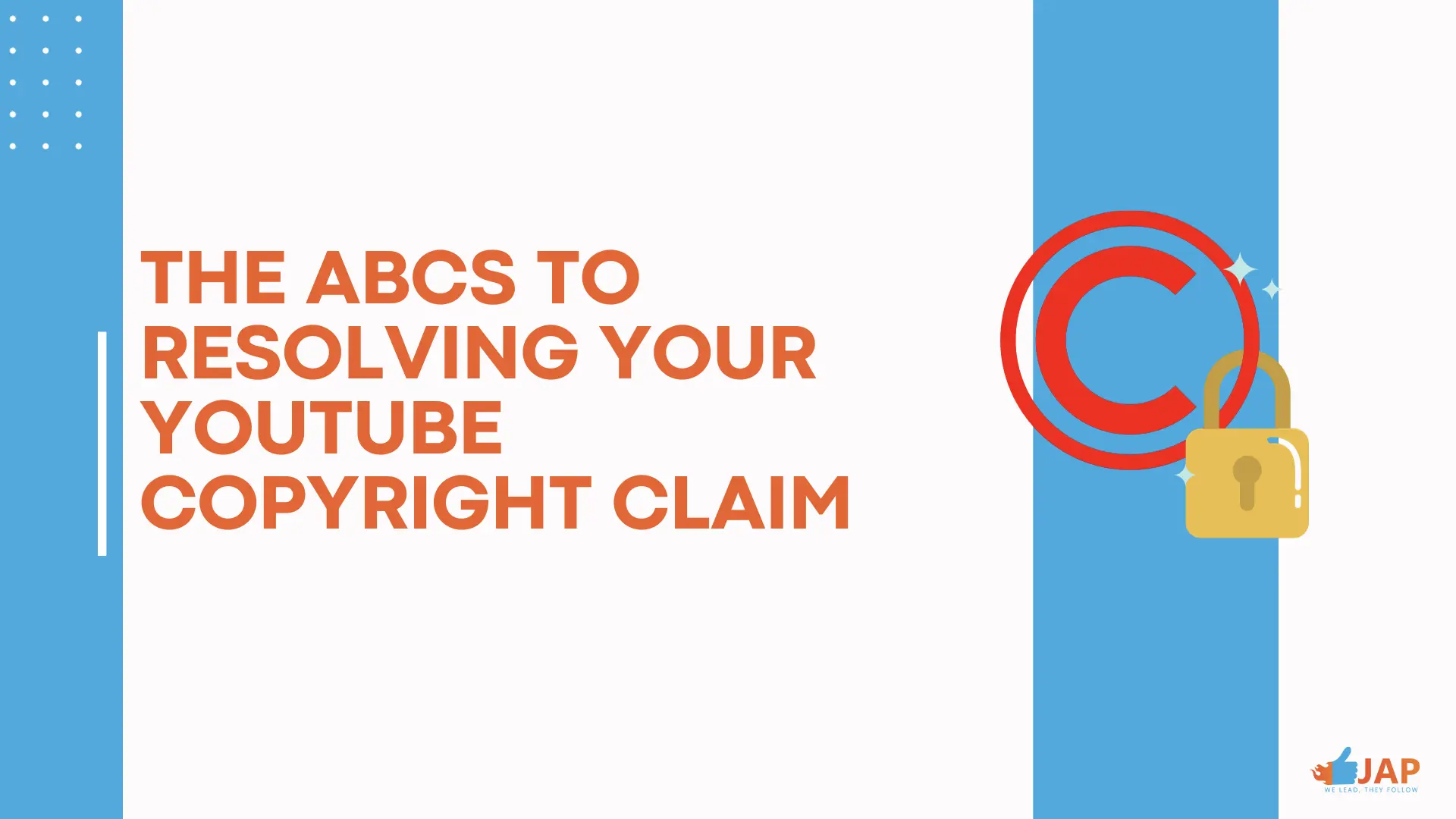Just Another Panel
The ABCs to Resolving Your YouTube Copyright Claim

Getting a YouTube copyright claim can be scary. You’re probably thinking, “Am I in trouble? Is it going to affect the channel I’ve worked hard to build?” Fortunately, YouTube copyright claims are not that big of a deal as I’ve handled one myself. I’ll explain what it means, how it can affect your channel, and provide surefire ways to fix it. You’ll also learn some tips to avoid getting any more in the future. Ready to learn?
When you get a YouTube copyright claim, the copyright holder can take actions such as blocking the video, monetizing it for themselves, monitoring video statistics, or muting the copyrighted audio. Resolve claims by disputing them, provided you have the right to use the copyrighted material — editing the video to ensure copyright compliance also works.
Understanding the Implications of a YouTube Copyright Claim
You get a YouTube copyright claim when you use someone else’s copyrighted material (song, image, or video) in your YouTube video. The copyright holder can choose to monetize the video for themselves, track the viewer statistics, mute the copyrighted audio, or block the video.
The Impact of a Copyright Claim on Your YouTube Channel
- Monetization: A YouTube copyright claim on any of your videos means you can’t monetize that video anymore. However, the copyright holder can choose to place ads on the video and receive the revenue it generates.
- Views: YouTube copyright claims also affect video views. This happens because YouTube may be less likely to suggest the video to viewers, thereby affecting its visibility.
- Watch Time: The copyright holder can restrict the affected videos in certain territories, which limits the number of people who view the video. So, if you’re trying to meet the 4000 public watch hours for YouTube monetization, a copyright claim can affect your goal. However, the watch hours from the affected video still count towards your overall watch time.
How to Check Your Copyright Claim on YouTube
When you get a claim, the next step should be to check how it affects your video. Then you can work on fixing it. Here’s how:
- Open your preferred browser on your computer and sign in to YouTube.
- Click on the menu icon; the three horizontal lines at the top left corner.
- Select Your Videos.
- Click on the Filter option above your list of videos.
- Then select Copyright claims.
- Hover over Restrictions to see details about the copyright claim on your video. Then click on Show Details for a comprehensive explanation of the claim.
How to Fix a YouTube Copyright Claim
- Dispute the Claim: If you have permission to use the copyrighted material, you can dispute the claim. From my research, I discovered that many people make false claims. Yours might just be one. In that case, challenge the claim. When you dispute a claim, the copyright holder gets 30 days to respond to your appeal. Within that period, they can choose to either reject the dispute or release the claim if there’s sufficient evidence that you have permission to use the copyrighted material.
- Delete the Video: Deleting the affected video is an easy fix. If you delete the video, the claim goes away. But it’s not ideal when the video is getting attention from viewers and probably fetching you money. Instead, try to edit the video. Deleting the video should be your last resort.
- Adjust the Video to Make it Copyright Compliant: In my experience, editing the video is the most suitable way to deal with YouTube copyright claims. Depending on what part of the video is copyrighted, there are two basic things you can do:
- Replace/Mute Song: If it’s a music copyright claim, you can choose to either mute the song or replace it with copyright-free music. I hear many YouTubers argue that if you edit the original track, it becomes a new one. But it doesn’t work that way. It may sound different, but if it was originally someone’s material, it’s still copyrighted.
- Trim out Copyrighted Piece: If it’s just a part of your video that contains copyrighted material, you can cut that part from the video using YouTube editor. However, this method is not ideal for every situation, like when you’re speaking over a copyrighted track.
3 Ways to Avoid Getting a Copyright Claim on YouTube
- Create Unique Content: This is a given. The best way to avoid copyright is to create your unique content. This way, you can be a copyright holder rather than an offender.
- Use Copyright-free Music: You can’t use any song you like to make your video. Some of them may be copyrighted. So, to avoid claims, stick to copyright-free music. You can also check the YouTube audio library for free music. However, don’t forget to credit the artist.
- Get Permission if You Must Use Copyrighted Music: If you don’t get copyright-free music that suits your taste, you can reach out to the artists or management of the music you’d like to use and get permission. Keep in mind that this may not save you from copyright claims, but having permissions makes it easier to dispute a claim.
FAQs
- Are YouTube Copyright Claims Bad? No. YouTube copyright claims don’t affect your channel. They only affect the particular video with the copyrighted material. Copyright holders can decide to block the video, monetize it, or track the viewers' statistics.
- What to Do If I Get a Copyright Claim on YouTube? If you get a YouTube copyright claim, you can dispute the claim if you have permission to use the copyrighted piece. Otherwise, trim out the copyrighted material using YouTube editor or replace/mute the copyrighted track in the case of music copyright claims.